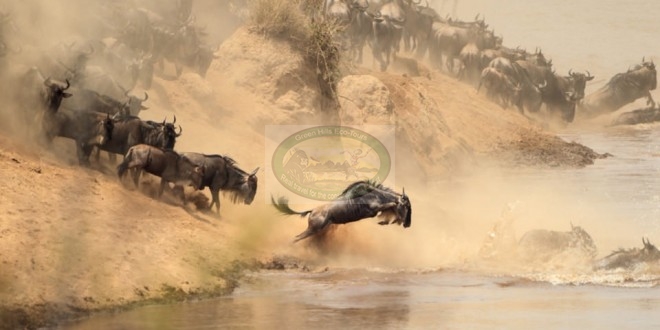The Serengeti is Africa’s most famous park. Renowned for over a million strong wildebeest ‘Great Migration’ and incredible concentrations of predators, the Serengeti is a park that guarantees an exceptional safari. The vast endless grass plains (Serengeti in Maasai) are the richest grazing grounds on the continent; home to the largest herds on the planet, and the highest concentrations of predators in Africa.
Over a million wildebeest and some 600,000 zebra move through the ecosystem, with lion, leopard, cheetah, hyena, wild dog and crocodiles making sure only the strongest survive. The sheer volume of numbers combined with the daily dramas of life and death make this an unforgettable experience. each one driven by the same ancient rhythm, fulfilling its instinctive role in the inescapable cycle of life: a frenzied three-week bout of territorial conquests and mating; survival of the fittest as 40km (25 mile) long columns plunge through crocodile-infested waters on the annual exodus north; replenishing the species in a brief population explosion that produces more than 8,000 calves daily before the 1,000 km (600 mile) pilgrimage begins again.
Tanzania’s oldest and most popular national park, also a world heritage site and recently proclaimed a 7th world wide wonder, the Serengeti is famed for its annual migration, when some six million hooves pound the open plains, as more than 200,000 zebra and 300,000 Thomson’s gazelle join the wildebeest’s trek for fresh grazing. Yet even when the migration is quiet, the Serengeti offers arguably the most scintillating game-viewing in Africa: great herds of buffalo, smaller groups of elephant and giraffe, and thousands upon thousands of eland, topi, kongoni, impala and Grant’s gazelle.
The spectacle of predator versus prey dominates Tanzania’s greatest park. Golden-maned lion prides feast on the abundance of plain grazers. Solitary leopards haunt the acacia trees lining the Seronera River, while a high density of cheetahs prowls the southeastern plains. Almost uniquely, all three African jackal species occur here, alongside the spotted hyena and a host of more elusive small predators, ranging from the insectivorous aardwolf to the beautiful serval cat.
But there is more to Serengeti than large mammals. Gaudy agama lizards and rock hyraxes scuffle around the surfaces of the park’s isolated granite koppies. A full 100 varieties of dung beetle have been recorded, as have 500-plus bird species, ranging from the outsized ostrich and bizarre secretary bird of the open grassland, to the black eagles that soar effortlessly above the Lobo Hills.
As enduring as the game-viewing is the liberating sense of space that characterises the Serengeti Plains, stretching across sunburnt savannah to a shimmering golden horizon at the end of the earth. Yet, after the rains, this golden expanse of grass is transformed into an endless green carpet flecked with wildflowers. And there are also wooded hills and towering termite mounds, rivers lined with fig trees and acacia woodland stained orange by dust.
Popular the Serengeti might be, but it remains so vast that you may be the only human audience when a pride of lions masterminds a siege, focussed unswervingly on its next meal.
About Serengeti: Size: 14,763 sq km (5,700 sq miles).
Location: 335km (208 miles) from Arusha, stretching north to Kenya and bordering Lake Victoria to the west.
Getting there: Scheduled and charter flights from Arusha, Lake Manyara and Mwanza.
Drive from Arusha, Lake Manyara, Tarangire or Ngorongoro Crater.
Serengeti activities: From here you can enjoy a magnificent unforgettable Hot air balloon safaris, Exciting walking safari, picnicking, game drives, bush lunch/dinner can be arranged with Green Hills Ecotours. Maasai rock paintings and musical rocks. Visit neighboring Ngorongoro Crater, Olduvai Gorge, Ol Doinyo Lengai volcano and Lake Natron’s flamingos.
When to go: To follow the wildebeest migration, December-July. To see predators, June-October.
NOTE: The route and timing of the wildebeest migration is unpredictable. Allow at least three days to be assured of seeing them on your visit – longer if you want to see the main predators as well.
Experience Tanzania with Green Hills Ecotours local guides will give you the great opportunity to explore the scenic beauty, history, diverse culture and enjoy the local food while interacting with local people. Come experience the adventure of a lifetime; A destination to quiet your mind and regenerate your spirit. Book your tour at: ecotours@gmx.com
 Green Hills Ecotours For all kinds of tours in Central Africa
Green Hills Ecotours For all kinds of tours in Central Africa
